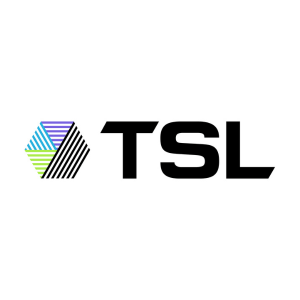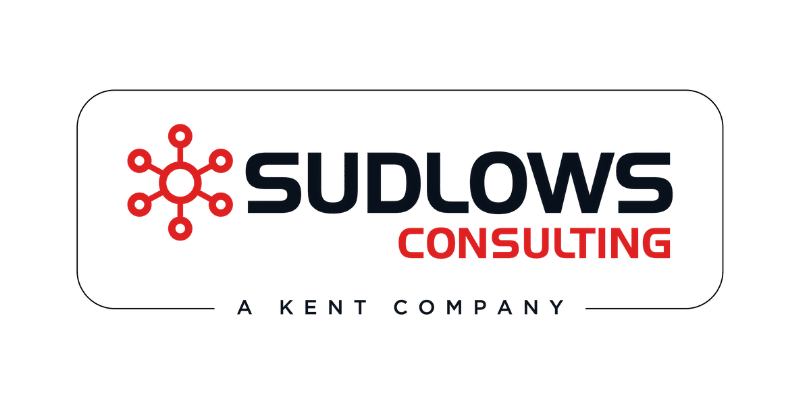-
Datacloud USA stage - Level 317-Sep-2025
- Datacloud USA
Technological advancements and investments into data centers dominate the news headlines, but we must not lose sight on the importance of delivery. Delivering on time and at cost is a key metric to th ... -
Metro Connect Fall stage - Level 316-Sep-2025
- Metro Connect Fall
Across the last mile, middle mile and long haul new fiber deployments are accelerating create a strain on the supply chain and construction firms. Getting high capacity and geographically diverse fibe ... -
) Datacloud Engage room - Level 416-Sep-2025
Datacloud Engage room - Level 416-Sep-2025- Roundtables
Each roundtable will comprise of regulators, key operators, energy companies and other key stakeholders. They will convene to discuss state-specific opportunities and challenges and share with the gro ... -
Expo Hall, Level 316-Sep-2025
- Datacloud USA
- Metro Connect Fall
- Datacloud Energy
-
Datacloud USA stage - Level 317-Sep-2025
- Keynote sessions
-
Datacloud USA stage - Level 317-Sep-2025
- Keynote sessions
We are living in an extraordinary moment of transformation. Since the pandemic, global internet traffic has nearly quadrupled—driven by explosive growth in social media and accelerated adoption of AI applications across both the public sector and global enterprises seeking operational efficiency.
According to the IEA, global energy demand rose by 2.2% last year, led by industrial activity. Data centers alone now account for more than 50% of recent global electricity growth, and the sector’s energy consumption is expected to outpace most other industrial segments in the years ahead.
The digital infrastructure landscape is evolving rapidly, with billions of dollars being invested in the design and deployment of gigawatt-scale AI cluster data centers—reshaping the future of digital, energy, and grid ecosystems.
Join us for this opening keynote to hear from industry thought leaders with deep expertise and global recognition. We’ll explore how to reinvent conventional thinking and strategically deploy capital—billions per year—with clear, intentional outcomes to drive a generational transformation in digital infrastructure for the AI era.
-
Datacloud USA stage - Level 316-Sep-2025
- Keynote sessions
- Datacloud USA
- Metro Connect Fall
- Datacloud Energy
The growth of AI and cloud computing spurring data center demand has led to the need for expanded fiber optic infrastructure to increase connectivity. Building direct, low-latency and scalable paths b ... -
Expo Hall, Level 316-Sep-2025
- Datacloud USA
- Metro Connect Fall
- Datacloud Energy
-
Datacloud USA stage - Level 317-Sep-2025
- Keynote sessions
Data centers have emerged as one of the hottest esoteric assets for investors to get exposure to, and this financing is being done through numerous different verticals. Since 2018, data centers in the ... -
Datacloud USA stage - Level 316-Sep-2025
- Keynote sessions
-
Expo Hall, Level 317-Sep-2025
- Datacloud USA
- Metro Connect Fall
-
Metro Connect Fall stage - Level 317-Sep-2025
- Metro Connect Fall
In a world of costly delays and evolving customer expectations, proactive coordination throughout the entire data centre value chain is essential, from the powered shell developer to land acquisition, utilities, connectivity, and permitting. While a neutral model is essential, there are clear synergies to be unlocked when portfolio companies collaborate on the same project.
-
What risks does a lack of coordination pose to project timelines and the knock-on effect on ROI?
-
How best can we encourage this collaboration across hyperscaler projects to ensure on-time delivery?
-
How do coordinating developers need to adapt their approach to different deployment types, especially as we move from LLM training sites towards inference?
-
Datacloud USA stage - Level 317-Sep-2025
- Datacloud USA
-
Datacloud USA stage - Level 317-Sep-2025
- Datacloud USA
Scalability and flexibility are the key metrics when considering a successful design of data centers. With AI advancing, and the need for inference faicilities, retrofitting and rebuilding will be a n ... -
Metro Connect Fall stage - Level 317-Sep-2025
- Metro Connect Fall
Latin America is home to several exciting data centre markets, including Brazil, Mexico, Colombia, and Costa Rica. This panel will explore the role the region can play in meeting demand for sustainable power, the role it can play in serving US workloads with less stringent latency requirements, and the growing local demand for data centre services. -
Austin Marriott Downtown - Moontower - Level 217-Sep-2025
- Datacloud USA
- Metro Connect Fall
- Datacloud Energy
-
Datacloud USA stage - Level 317-Sep-2025
- Keynote sessions
As Datacloud USA and Metro Connect Fall draws to a close, we've invited members of our leadership committee to share their key predictions for digital infrastructure in 2025. At Metro Connect USA in F ... -
Datacloud Engage room - Level 417-Sep-2025
- Workshop
' How are operators working with community stakeholders to bolster public perception? ' Where are key areas for improvement? ' Maintaining a positive operator / regulator relationship -
Datacloud USA stage - Level 316-Sep-2025
- Datacloud USA
-
Datacloud Engage room - Level 415-Sep-2025
- Datacloud USA
- Metro Connect Fall
- Datacloud Energy
Ahead of Datacloud USA and Metro Connect Fall we will be holding our next Digital Infra Leaders' Summit. The summits are an intimate half-day invitation only workshop style sessions that bring togethe ... -
Moontower Foyer - Level 215-Sep-2025
- Datacloud USA
- Metro Connect Fall
- Datacloud Energy
-
Grey Rock Golf Club15-Sep-2025
- Datacloud USA
- Metro Connect Fall
- Datacloud Energy
For any enquiries please contact Joe Howarth at joe.howarth@datacloudseries.com -
Moontower Foyer - Level 216-Sep-2025
- Datacloud USA
- Metro Connect Fall
- Datacloud Energy
-
Datacloud USA stage - Level 316-Sep-2025
- Keynote sessions
The data center industry is booming, and capex is expected to surpass $1trillion dollars by 2029. With new data centers in more rural locations this is subsequently fuelling the demand for new fibre b ... -
Expo Hall, Level 316-Sep-2025
- Datacloud USA
- Metro Connect Fall
-
Datacloud USA stage - Level 316-Sep-2025
- Datacloud Energy
The IEA estimates that the U.S. data center's electricity consumption will rise from 20TWh from 2022, to 260TWh in 2026. With different regulatory, cost, and scalability considerations for different s ... -
) Datacloud Engage room - Level 416-Sep-2025
Datacloud Engage room - Level 416-Sep-2025- Workshop
This session will explore how data center investors and operators can leverage tailored insurance solutions to mitigate risks and strengthen financial performance across the project lifecycle. We will spotlight the industry’s first SLA insurance product—designed specifically to address service level agreement risks and protect against financial loss from outages. -
Datacloud USA stage - Level 316-Sep-2025
- Datacloud Energy
Led by the Bureau of Economic Geology at The University of Texas at Austin, this talk introduces a multidisciplinary, data-driven forum, "COMPASS"- Collaborative Optimization & Management of Power Allocation: Surface & Subsurface strategies - for planning large electric loads. We bring shared maps, methods, and metrics across power, water, land, and workforce to convert demand into reliable capacity. See how integrated planning and continuous learning de-risk siting, shorten timelines, and align developers, utilities, communities, and regulators—so Texas builds where it truly works.
-
Metro Connect Fall stage - Level 316-Sep-2025
- Metro Connect Fall
The direct exchange of traffic is vital to reducing latency and increasing network resilience. The interconnection landscape in the US is undergoing a transformation as the need for additional exchang ... -
Datacloud USA stage - Level 316-Sep-2025
- Datacloud Energy
Nuclear energy provides a clean, high-energy density source of energy that will be a key source in meeting surging data center demand. From building near a nuclear plant to leveraging SMRs, this panel ... -
Datacloud USA stage - Level 316-Sep-2025
- Datacloud Energy
Maintaining uptime of data centers is integral to daily operations, but existing storage systems are expensive and inefficient. This panel will discuss innovations in this space and strategies for ope ... -
Metro Connect Fall stage - Level 316-Sep-2025
- Metro Connect Fall
As the data center market booms, demand is also accelerating for fiber. High speed, high-capacity networks are vital to unlocking the value of AI, moving workloads between distributed data centers and ... -
Austin Marriott Downtown - Moontower - Level 216-Sep-2025
- Datacloud USA
- Metro Connect Fall
-
Datacloud USA stage - Level 316-Sep-2025
- Datacloud USA
The liquid cooling market is anticipated to reach $48.42billion by 2034, exemplifying the need for innovative and advanced cooling methods to enable AI workloads and prevent damage and downtime. This ... -
Metro Connect Fall stage - Level 316-Sep-2025
- Metro Connect Fall
The unprecedented demand for data centers is driving demand for fiber. As data centers chase power into new, under connected markets and the move to inference increases demand for low latency connecti ... -
Austin Marriott Downtown - Moontower - Level 215-Sep-2025
- Datacloud USA
- Metro Connect Fall
- Datacloud Energy
-
Datacloud Engage room - Level 416-Sep-2025
- Datacloud USA
- Metro Connect Fall
Fireside chat - Leadership; managing up and down in your organization
-
Datacloud USA stage - Level 316-Sep-2025
- Keynote sessions
Even as AI drives an unprecedented acceleration in demand for digital infrastructure, the next leap forward in innovation is emerging: quantum computing. With quantum’s ability to solve intractable problems, unprecedented advances in cybersecurity, medical and material sciences, finance, sensing, and even more powerful AI are just over the horizon. These new use cases will require massive investment into digital infrastructure, but also offers ROI for the investors who get it right. Join us to hear from leading investors and innovators in quantum computing to discuss:
- How will quantum computing disrupt the traditional compute offering of data centers?
- Which use cases exist that make them commercially viable?
- What will quantum digital infrastructure look like, how will design evolve, and how can operators prepare for this new form of computing?
- Will the convergence of quantum and space tech unlock a new era of secure global communication?
-
) Datacloud Engage room - Level 415-Sep-2025
Datacloud Engage room - Level 415-Sep-2025- Datacloud USA
- Metro Connect Fall
- Datacloud Energy
Overall Agenda 12:30 - 12:40 PM CDT | Welcome Remarks 12:40 - 1:10 PM CDT | Fireside Chat: Data Center Market Overview, U.S. & Texas | DatacenterHawk Mike Netzer host & moderator Santiago Suinaga fr ... -
Moontower Foyer - Level 217-Sep-2025
- Datacloud USA
- Metro Connect Fall
- Datacloud Energy
-
) Datacloud Engage room - Level 416-Sep-2025
Datacloud Engage room - Level 416-Sep-2025- Datacloud USA
- Metro Connect Fall
- Datacloud Energy
-
) Datacloud Engage room - Level 417-Sep-2025
Datacloud Engage room - Level 417-Sep-2025- Datacloud USA
- Metro Connect Fall
- Datacloud Energy
-
Datacloud USA stage - Level 316-Sep-2025
- Datacloud USA
- Datacloud Energy
Off-grid Conditioned Power up to 500MW -
16-Sep-2025Invite only session for the Talent in Tech cohort.
-
) Datacloud Engage room - Level 417-Sep-2025
Datacloud Engage room - Level 417-Sep-2025- Datacloud USA
- Datacloud Energy
The session presents solutions for voltage fluctuations, power integration, and advanced control strategies in modern data centers, focusing on both grid-connected and islanded operating scenarios. In ... -
Oilcan Harry's at 211 West 4th Street16-Sep-2025
- Datacloud USA
- Metro Connect Fall
- Datacloud Energy
Contact Jonathan Shamay-Draluck: jonathan.shamaydraluck@gtlaw.com -
Austin Marriott Downtown - Moontower - Level 216-Sep-2025
-
Happy HourExpo Hall, Level 316-Sep-2025
- Datacloud USA
- Metro Connect Fall

-
Expo Hall, Level 316-Sep-2025
- Datacloud USA
- Metro Connect Fall
- Datacloud Energy

Agenda
